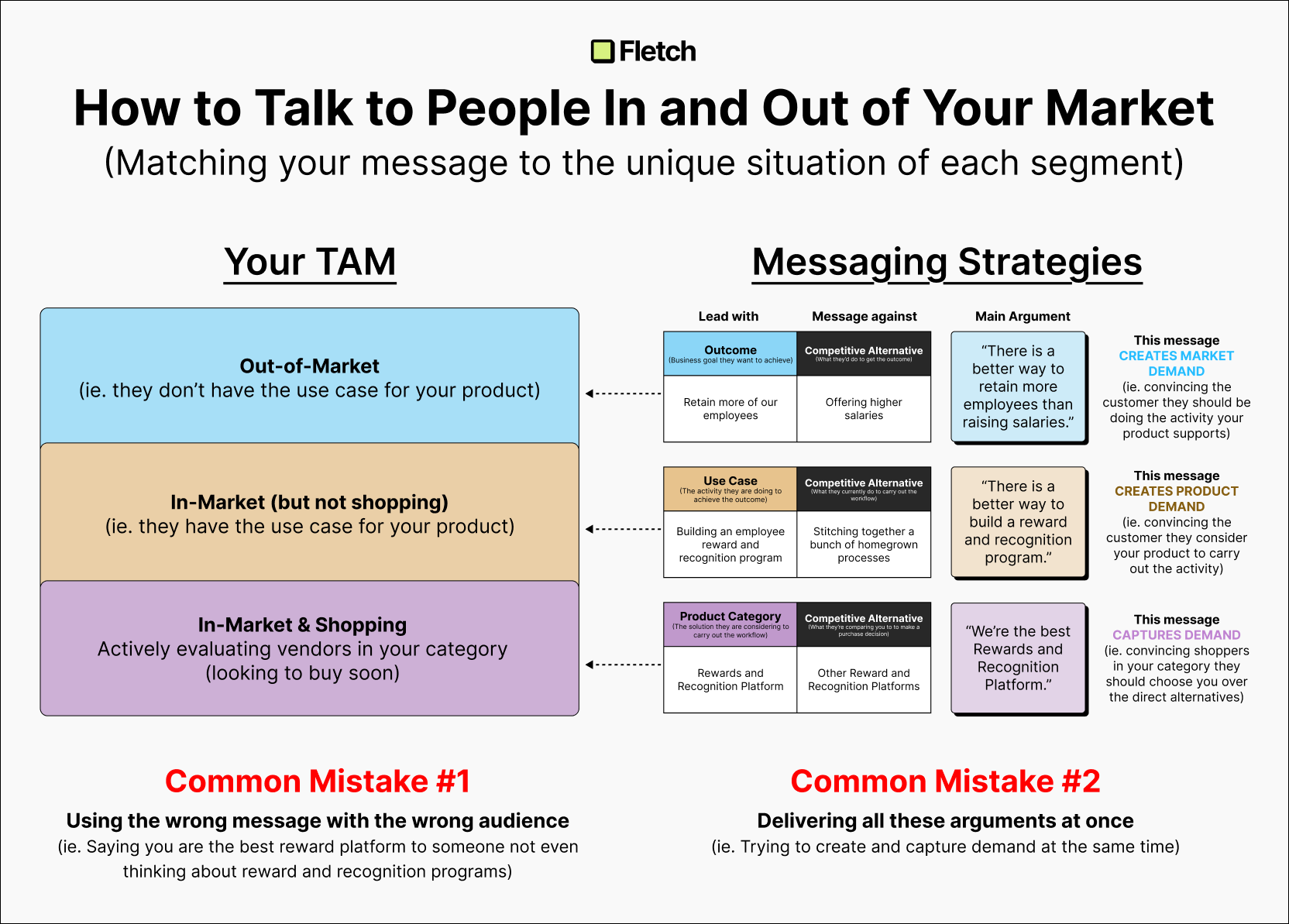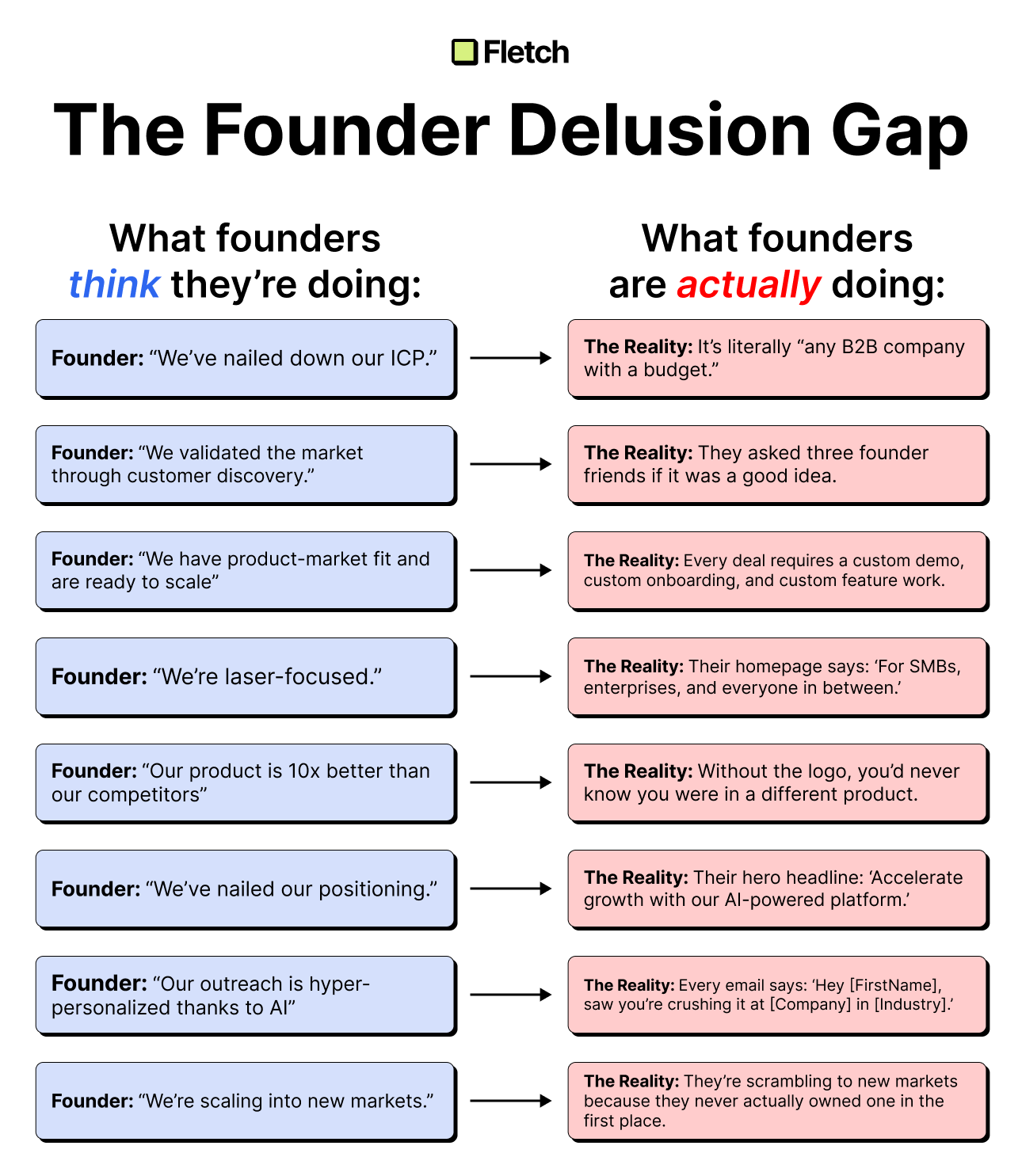Levels of Specificity of Startup Positioning


😱 How specific should your startup positioning be?
This question is critical for startup growth...
💢 And many founders get it wrong.
Position too broadly...
🙅 And no one gets what you do — making growth a real struggle.
Position too targeted...
🙈 And you ignore too much of your market — limiting growth.
____
So how should early stage founders approach positioning?
👉 In general, early stage startups should do these two things:
1️⃣ Build your SAM-Level Positioning
The key here is being able to explain your product to multiple segments - and have them all understand what you do.
It’s more specific than your TAM Positioning - but still leaves enough room for growth as you experiment towards product-market fit.
2️⃣ Add SOM-Level Positioning
↳ to experiment as you gain traction
In the end, this type of targeted positioning is what will yield the highest impact in your go to market programs.
The catch?
🤑 They are expansive to develop and operate.
So apply your resources wisely.
And only double-down on this positioning once you have proved it works.
____
The example shown is for Airtable. (see image)
Early on, their approach was very broad (TAM Positioning) — as they started to get a feel for how early adopters would use and think about their product.
And as they gained traction, they slowly converged their messaging to be more specific (SAM Positioning).
Fast forward to today, and they now have multiple GTM programs built around highly specific segments (SOM Positioning).
👉 What level of positioning are you taking with your startup?

Ben Wilentz
Founder, Stealth Startup





